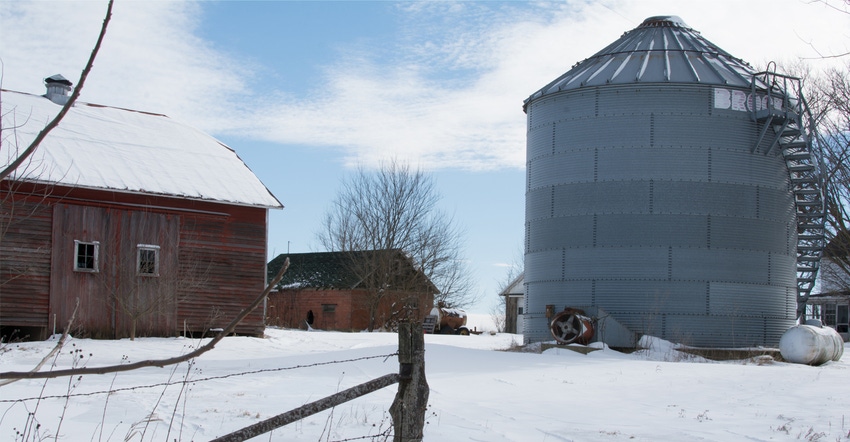
The Northern Plains are often known for their long, snowy, cold winters. Farmers and ranchers often batten down the hatches of their home farm before the snow flies.
Before the winter weather moves in, here are a few ways you can prepare your farmstead’s home, equipment and lawn.
Prepare home for cold
With less-than-favorable winter conditions, many people will spend most of their time indoors. To keep homes comfortable and protected from winter elements, take these extra steps this fall:
Check systems. Have your heating system serviced before cold weather hits, whether that be a gas or electric furnace, or a wood burning stove. These systems should be serviced at least once a year to prevent fire and smoke damage.
Seal up buildings. Take a look around the outside of your home, repairing or sealing any cracks or openings. Adding caulking or weather stripping around windows and doors can help prevent cold air from getting into your home.
Plan for power. As ice storms can be an issue in the Dakotas, having a reliable power backup can be a lifesaver during inclement weather. A portable, gas-operated generator can keep your home warm during power outages and will help prevent frozen pipes.
Clear debris. Check around trees near your home to remove any dead or damaged branches. Winter wind gusts may cause these branches to break free and could cause damage to your home.
Phone a friend. Finally, if you plan on taking any holiday trips, ask a neighbor or friend to check on your property so any frozen pipes or water leaks can be swiftly handled.
Keep machinery in top condition
Proper storage and maintenance of farm equipment, can make spring planting preparations easier.
If equipment may still be used over the winter, operators should take care to maintain fuel, lubrication and air filtration systems, as conditions can help extend the machine’s life. During use, keep undercarriages clean of mud, snow or debris, as they represent around 50% of maintenance costs.
If machines will not be used over the winter, remove the batteries and store them inside or in a heated shop.
Keeping rodents and other pests out of machinery can be difficult; control them by using traps and baits. These can include snap traps, live-catch traps, sticky traps or glue boards, and enclosed bait stations. Reducing rodent populations will lower the risk of damaged wiring.
To prepare for storage, sprayers should be drained, cleaned and rinsed for the winter. Chemicals can cause corrosion, damage parts and create clogs to your equipment.
While equipment may benefit from storage in a climate-controlled shop, keeping it dry is most essential. While a shop or garage might be ideal, even using a tarp to keep snow off is beneficial.
Tidy up lawn
Winterizing your lawn this fall can lead to a healthier turf in 2023.
Take care that lawns can breathe through any mulched or raked leaves. A good rule of thumb is to ensure that glass blades can be seen through mulch. A lawn smothered by mulch or leaves could suffer disease problems in spring.
Fertilizing, watering or killing weeds in your lawn is not recommended past September in the fall, but dormant seeding of your lawn is still possible over winter.
While the seeds will not germinate until the spring thaw, they can overwinter in level areas where they won’t wash away. If you do choose to spread dormant seed, skip the crabgrass preventer the following spring as this will kill all germinating grass seedlings.
Also, the final fall mowing should occur after the grass has stopped growing. A lawn with grass too tall might become matted down with snow and susceptible to disease.
Before winter comes, taking a few steps to prepare this fall can help ensure a smooth and safe winter and spring season.
North Dakota State University Extension and Dakota Community Bank and Trust contributed to this article.
About the Author(s)
You May Also Like






